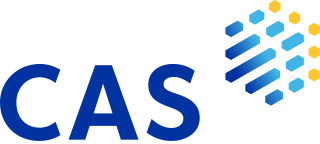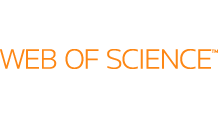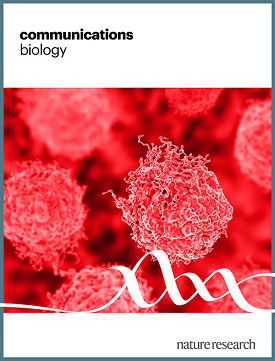Cell Cycle is a biweekly peer-reviewed scientific journal covering all aspects of cell biology. It was established in 2002 with Mikhail V. Blagosklonny as founding editor-in-chief. Originally published bimonthly, it is now published biweekly.
PLOS Biology is a monthly peer-reviewed scientific journal covering all aspects of biology. Publication began on October 13, 2003. It is the first journal published by the Public Library of Science. The editor-in-chief is Nonia Pariente.

A citation index is a kind of bibliographic index, an index of citations between publications, allowing the user to easily establish which later documents cite which earlier documents. A form of citation index is first found in 12th-century Hebrew religious literature. Legal citation indexes are found in the 18th century and were made popular by citators such as Shepard's Citations (1873). In 1961, Eugene Garfield's Institute for Scientific Information (ISI) introduced the first citation index for papers published in academic journals, first the Science Citation Index (SCI), and later the Social Sciences Citation Index (SSCI) and the Arts and Humanities Citation Index (AHCI). American Chemical Society converted its printed Chemical Abstract Service into internet-accessible SciFinder in 2008. The first automated citation indexing was done by CiteSeer in 1997 and was patented. Other sources for such data include Google Scholar, Microsoft Academic, Elsevier's Scopus, and the National Institutes of Health's iCite.

Chemical Abstracts Service (CAS) is a division of the American Chemical Society. It is a source of chemical information and is located in Columbus, Ohio, United States.
The impact factor (IF) or journal impact factor (JIF) of an academic journal is a scientometric index calculated by Clarivate that reflects the yearly mean number of citations of articles published in the last two years in a given journal, as indexed by Clarivate's Web of Science.

Monthly Notices of the Royal Astronomical Society (MNRAS) is a peer-reviewed scientific journal in astronomy, astrophysics and related fields. It publishes original research in two formats: papers and letters. MNRAS publishes more articles per year than any other astronomy journal.
PLOS Genetics is a peer-reviewed open access scientific journal established in 2005 and published by the Public Library of Science. The founding editor-in-chief was Wayne N. Frankel. The current editors-in-chief are Gregory S. Barsh and Gregory P. Copenhaver. The journal covers research on all aspects of genetics and genomics.

The Web of Science is a paid-access platform that provides access to multiple databases that provide reference and citation data from academic journals, conference proceedings, and other documents in various academic disciplines. Until 1997, it was originally produced by the Institute for Scientific Information. It is currently owned by Clarivate, and currently contains 79 million records in the core collection and 171 million records on the platform.
The International Journal of Environmental Research and Public Health is a peer-reviewed open access scientific journal that was established in 2004 and is published by MDPI. The editor-in-chief is Paul B. Tchounwou. The journal covers all aspects of environmental health sciences and public health.
Acta Crystallographica is a series of peer-reviewed scientific journals, with articles centred on crystallography, published by the International Union of Crystallography (IUCr). Originally established in 1948 as a single journal called Acta Crystallographica, there are now six independent Acta Crystallographica titles:
Reproduction is a monthly peer-reviewed medical journal covering the cellular and molecular biology of reproduction, including the development of gametes and early embryos in all species; developmental processes such as cell differentiation, morphogenesis and related regulatory mechanisms in normal and disease models, assisted reproductive technologies in model systems and in a clinical environment, and reproductive endocrinology, immunology and physiology. Emerging topics including cloning, the biology of embryonic stem cells, environmental effects on reproductive potential and health, and epigenetic effects on reproductive and developmental processes are also covered. All editorial and review content is free to access from publication; research articles become available after 12 months.
Genome Biology is a peer-reviewed open access scientific journal covering research in genomics. It was established in 2000 and is published by BioMed Central. The chief editor is currently Andrew Cosgrove.

Nature Communications is a peer-reviewed, open access, scientific journal published by Nature Portfolio since 2010. It is a multidisciplinary journal that covers the natural sciences, including physics, chemistry, earth sciences, medicine, and biology. The journal has editorial offices in London, Berlin, New York City, and Shanghai.
Scientific Reports is a peer-reviewed open-access scientific mega journal published by Nature Portfolio, covering all areas of the natural sciences. The journal was established in 2011. The journal states that their aim is to assess solely the scientific validity of a submitted paper, rather than its perceived importance, significance, or impact.
Frontiers Media SA is a publisher of peer-reviewed, open access, scientific journals currently active in science, technology, and medicine. It was founded in 2007 by Kamila and Henry Markram. Frontiers is based in Lausanne, Switzerland, with offices in the United Kingdom, Spain, and China. In 2022, Frontiers employed more than 1,400 people, across 14 countries. All Frontiers journals are published under a Creative Commons Attribution License.
Aging Cell is a peer-reviewed open access scientific journal and an official journal of the Anatomical Society. It is published on their behalf by John Wiley & Sons. It was established in 2002. Its editor-in-chief is Monty Montano. The journal covers research on all aspects of aging, publishing research articles, reviews, minireviews, and commentaries.

Communications Biology is a peer-reviewed open access scientific journal covering research in biology. It was established in 2018 and is published by Nature Portfolio. It is a sister journal to Communications Physics and Communications Chemistry.

Stem Cells is a peer-review scientific journal of cell biology. It was established as The International Journal of Cell Cloning in 1983, acquiring its current title in 1993.
The Journal of Food and Drug Analysis is a quarterly peer-reviewed open-access scientific journal published by the Taiwanese Food and Drug Administration. It contains review and research articles covering food science, pharmacology, and chemical analysis. The journal was established in 1993 and the editor-in-chief is Gow-Chin Yen.
Cancer Cell International is a peer-reviewed scientific journal that publishes papers on various aspects of cancer cell. The journal was established in 2001 and is published by Springer Science+Business Media.







